Introduction
In the last decade, the exponential growth in the volume of Earth Observation (EO) data, fueled by rapid advancements in sensor and satellite technologies, affordable access to space, and the urgent need to enhance our planetary monitoring capabilities, has been remarkable. This era has ushered in an abundance of high-quality data, encompassing high-resolution imagery, multispectral data, thermal imaging, and synthetic aperture radar (SAR).
However, as the development of platforms designed to interpret this vast amount of data accelerates, aiming to provide the critical “insights from orbit” necessary to address contemporary challenges, there is a looming risk. The pursuit of these advancements may inadvertently lead to the creation of new data silos, hampering cross-collaboration, data sharing, and interoperability.
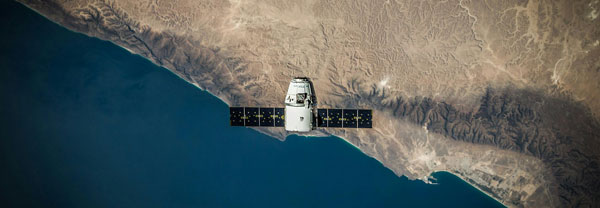
A better way forward with Open Standards and the new OGC API
Recognizing the need for a unified approach to handle EO data, the Open Geospatial Consortium (OGC), the European Space Agency (ESA) and others have developed a common framework for earth observation platforms, and a new suite of developer-friendly API specifications, known collectively as the OGC API (https://ogcapi.ogc.org/) and the ESA Common Architecture (https://eo4society.esa.int/common-architecture/). This framework, essentially a collection of interrelated APIs, serves as modular building blocks for crafting geospatial applications. Emphasizing simplicity and ease of use, these JSON/REST-based APIs enable developers to incorporate “just enough geo” functionality into their projects without being overwhelmed by extensive specifications. These standards span the full spectrum of technical requirements for EO applications, including cataloging, search, data streaming, processing, and analytics.
CubeWerx was well positioned to take a leadership role in shaping this new framework, serving both on the ESA architecture committee and as the editors of many of the OGC API specifications on which the framework is based
CubeWerx Insights
In this context, we introduce CubeWerx Insights, a pioneering open framework for EO data processing and analytics designed to overcome the challenges of data silos and enhance interoperability. Using the new OGC APIs, CubeWerx Insights creates a processing framework for EO data, built from the ground up to prioritize interoperability. It leverages these APIs to offer a comprehensive platform for cataloging, searching, and executing containerized applications across large-scale geodata collections housed in cloud or network-attached storage solutions. By providing open interfaces at every point of integration and linking components through a set of web dashboards, CubeWerx Insights orchestrates a cohesive and accessible application.
This framework represents a significant stride towards a more interconnected and accessible understanding of our planet, leveraging the collective power of EO data through open standards and innovative technologies. The platform is composed of the following components:
Data Products Catalog
The Insights catalog harvests metadata from data products described using the popular STAC (Spatial Temporal Asset Catalog) specification, as well as other popular metadata standards. The catalog offers a queryable interface, implemented through the OGC API – Records specification.
By incorporating a straightforward REST API, the Insights catalog empowers users and external applications to directly query its database for their specific needs. This feature significantly enhances the accessibility and usability of the data, fostering an environment where information is readily available for processing, analysis, or download. (UI/UX is functional but not fully skinned/themed in this version).
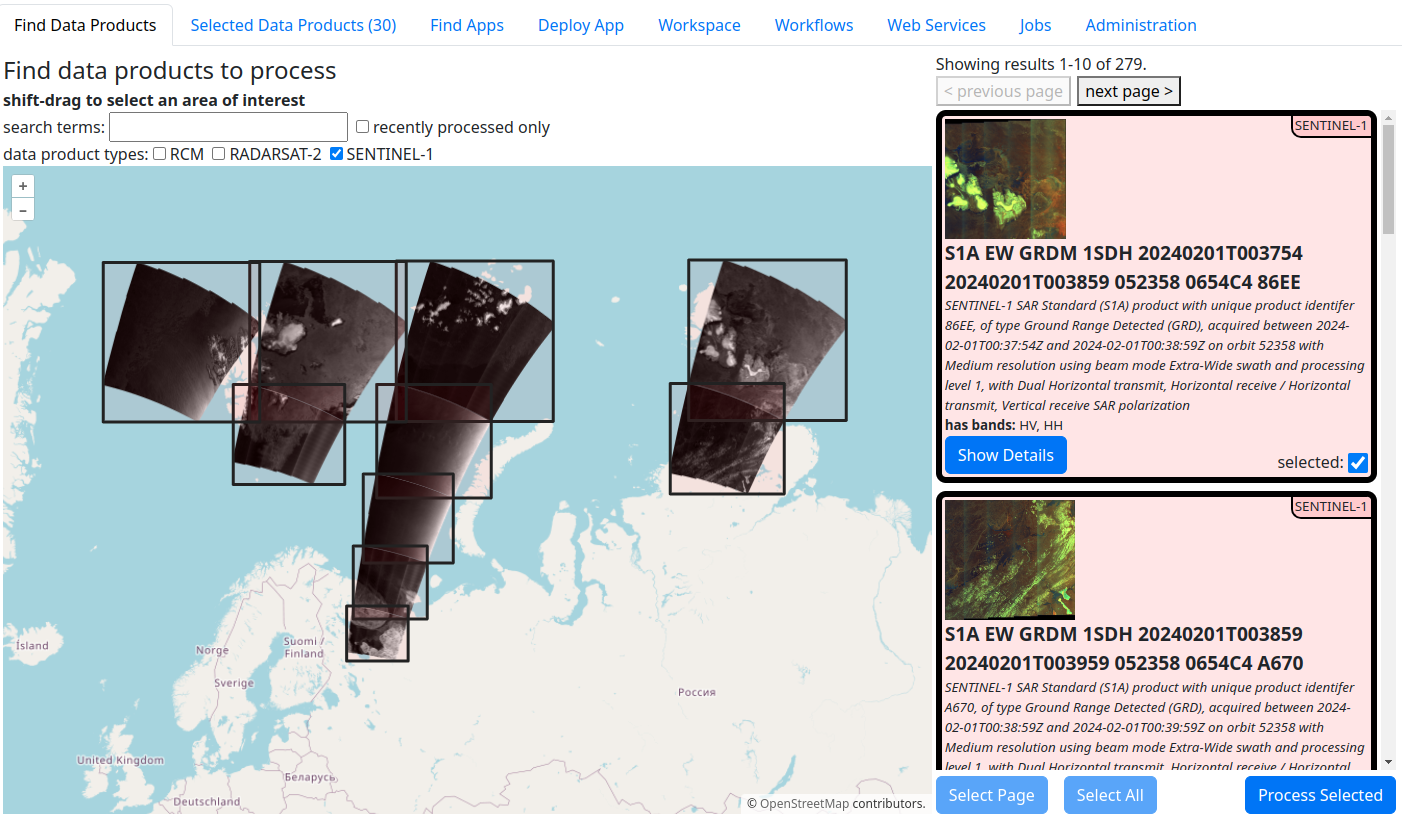
The central functionality of the Insights platform is to allow in situ processing of data products. The web client here is used to select a number of data products for further processing:
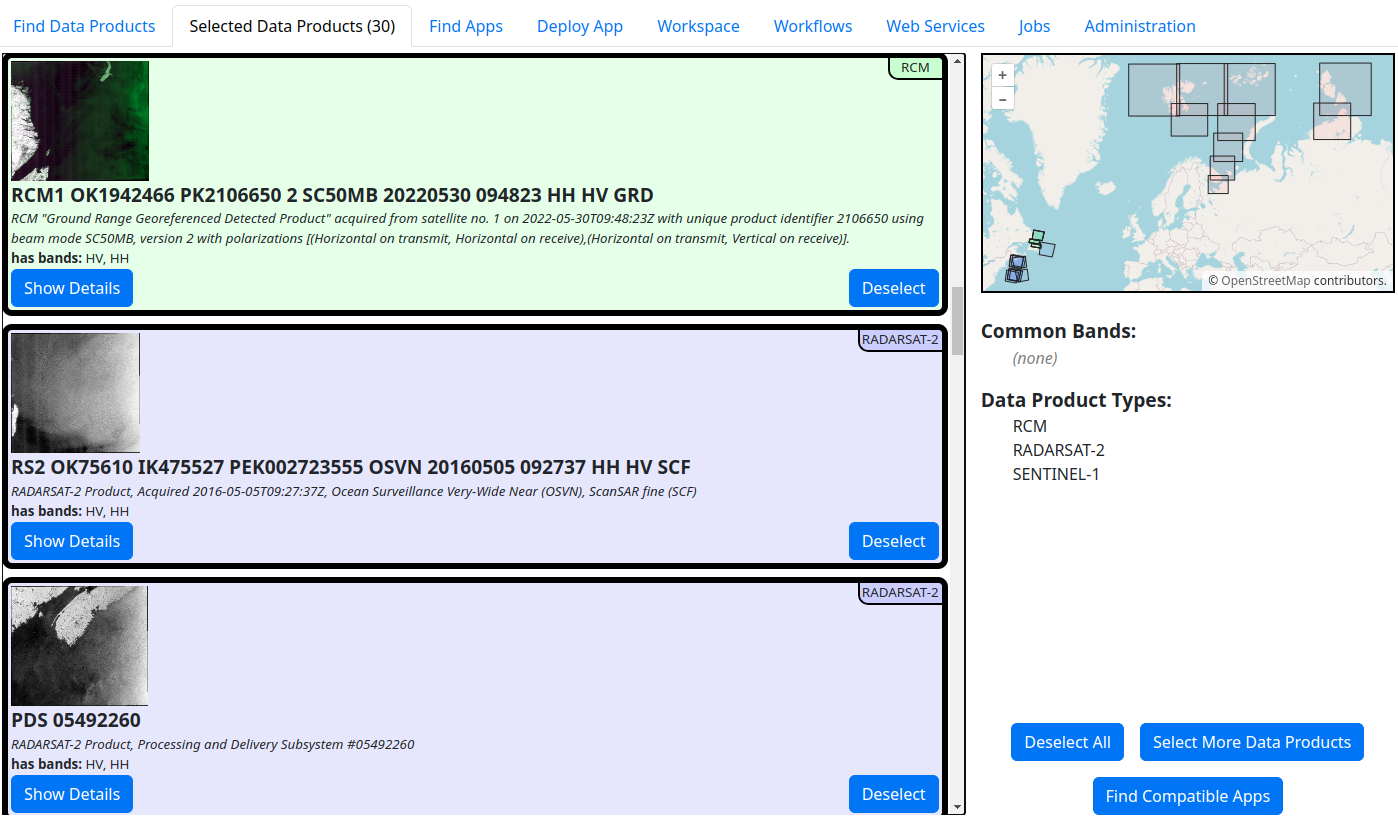
Analytics – The Application Deployment and Execution Service
The Application Deployment and Execution Service (ADES) is the cornerstone of the Stratos platform. It is based on the OGC API – Processes specification. Specifically, the ADES supports the following major functions:
- Deploy/Remove new containerized workloads to/from the platform.
- Query a list of applications (processes) available through the platform (including filtering by those applicable to a given set of data product types).
- Execute a process on a set of data products.
- Query the progress of running processes.
- Download or visualize the results of a process execution.
Querying the ADES for processes applicable to my selected data products
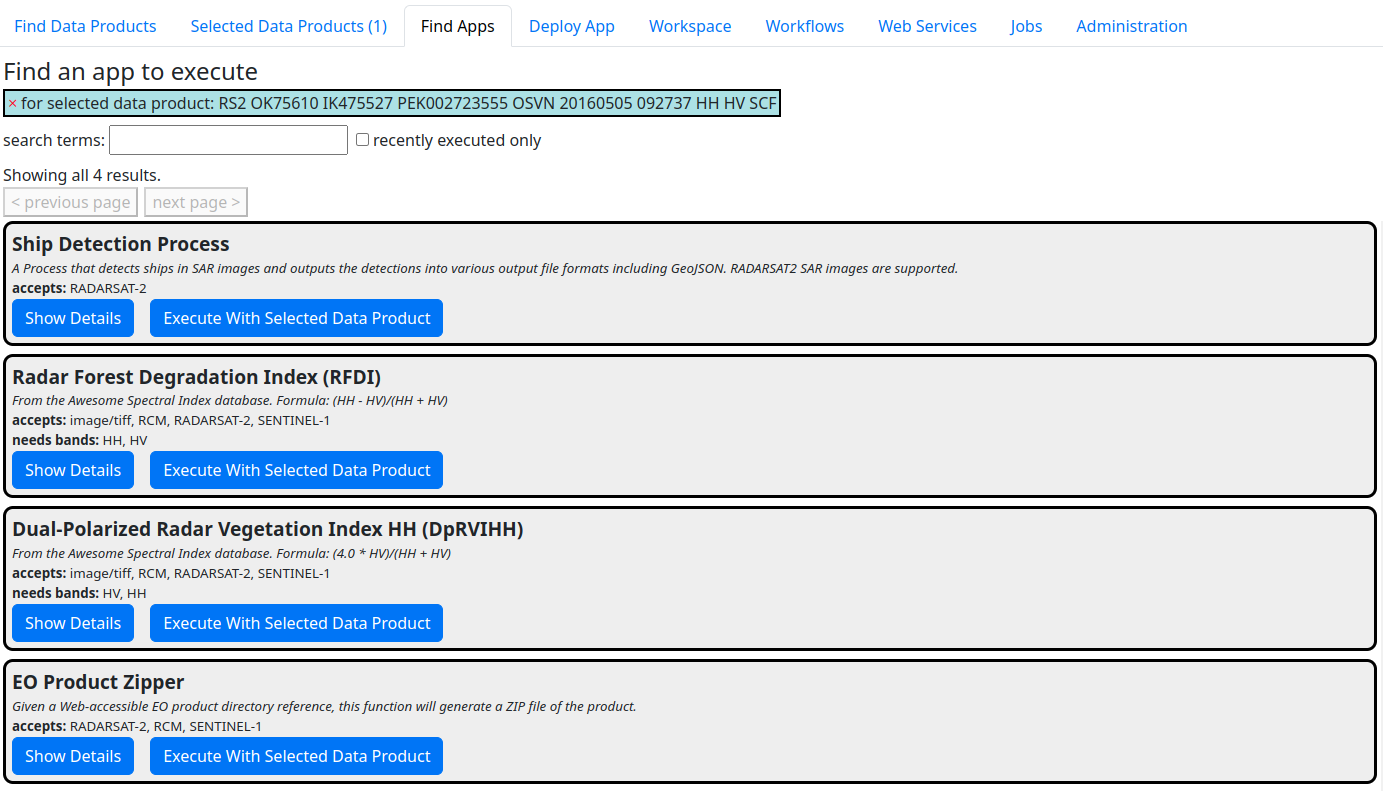
Once the required application has been selected the user can submit the job for processing:
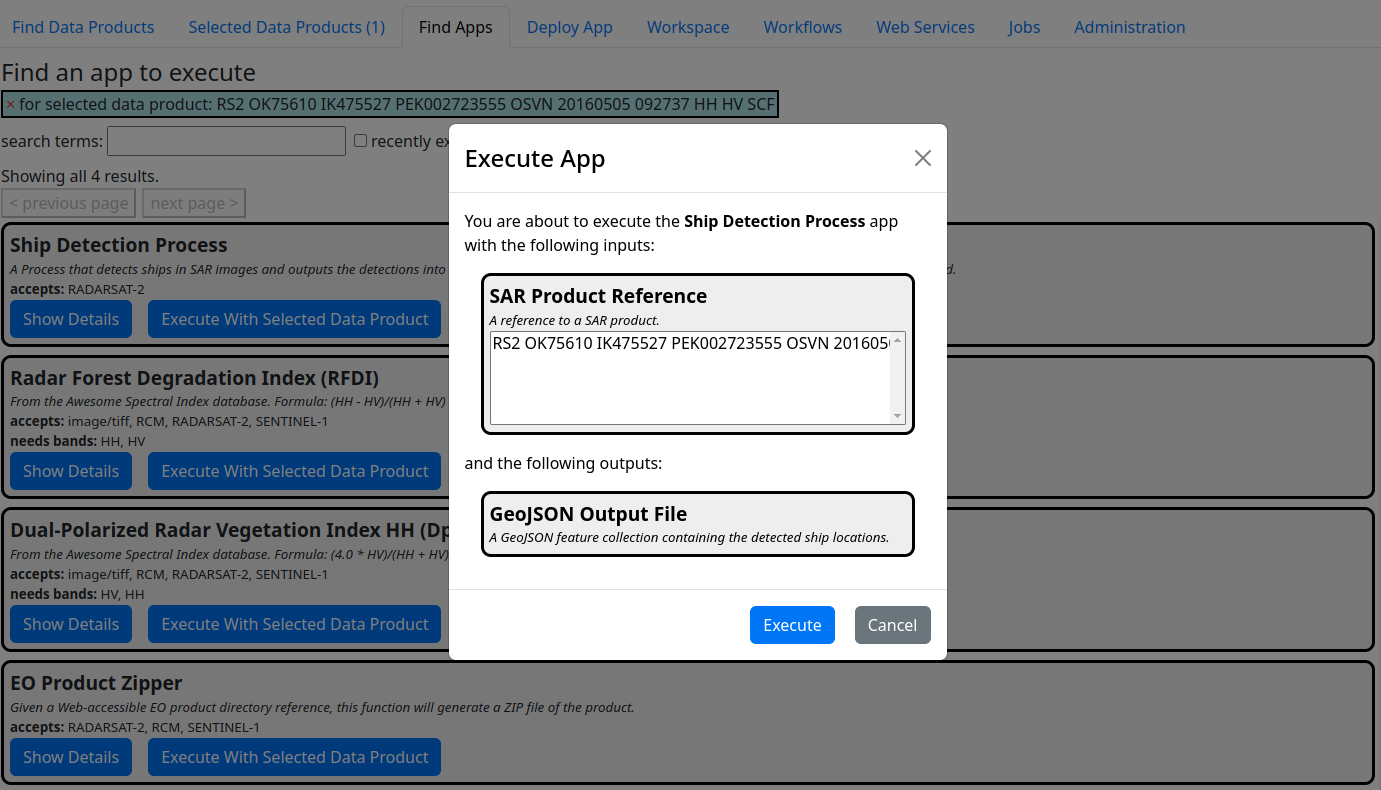
The ADES keeps a catalog of all completed and running processes, and the web client allows the user to check the status of running jobs, fetch results, and a number of other useful features.
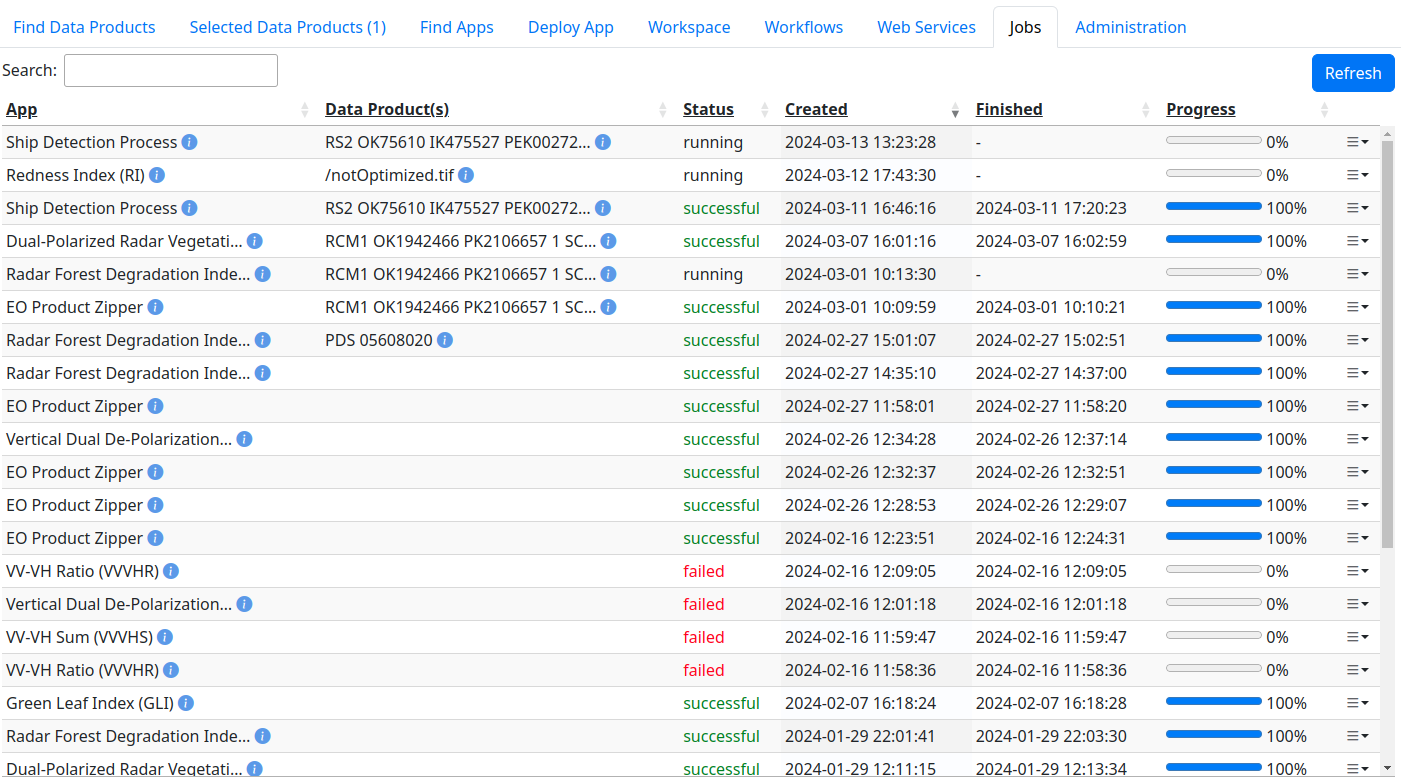
When a job is completed, the user has the ability to download the results or if applicable, display them directly in the web client:
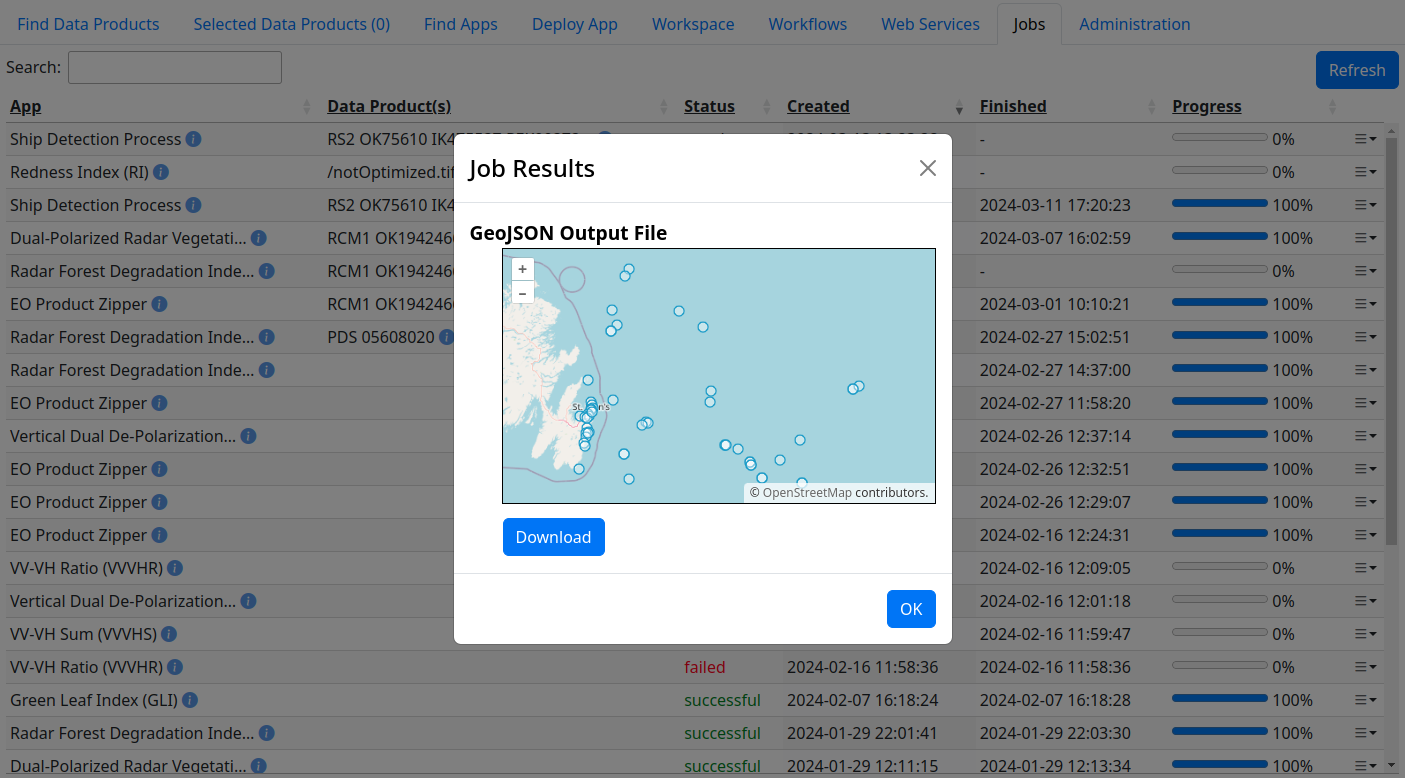
User Workspace
Each user of the platform has a workspace where they can upload their own data for processing, push their containerized applications for deployment, copy data from the catalog, deploy ad-hoc web mapping services and many other useful functions.

Here we see several web services that the user has chosen to deploy based on data in their web space. If the data product is of a type that the platform supports, such as GeoTIFF, GeoJSON, etc, the user can request a set of OGC API web mapping and legacy (WMS, WMTS, etc) endpoints.

The URLs link to service description documents which may be shared with developers to include in their applications, or desktop users running tools like QGIS, ArcGIS etc. These APIs are supported by hundreds of web mapping frameworks and desktop applications.
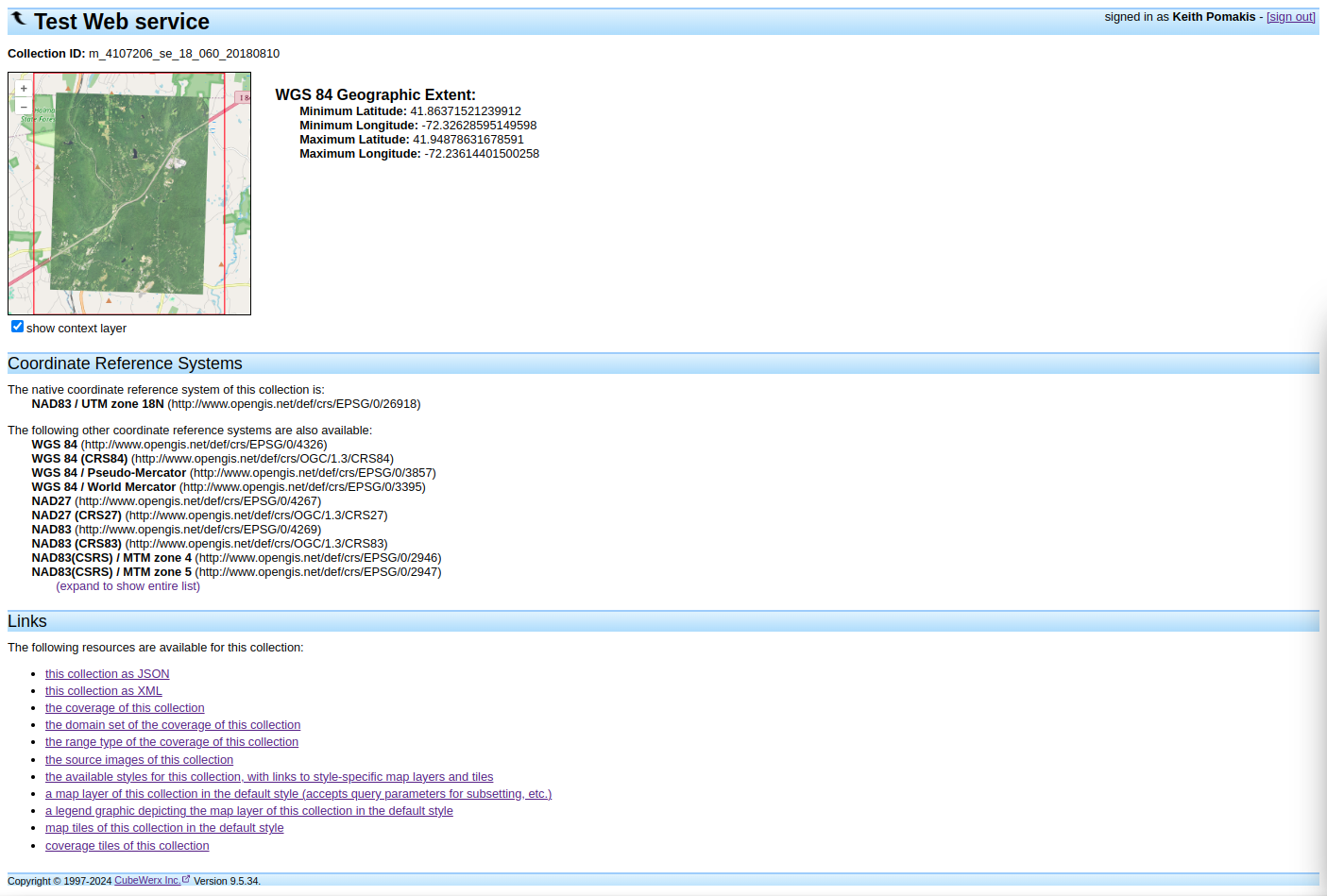
The platform also automatically provides a Swagger UI/OpenAPI document for each service endpoint.
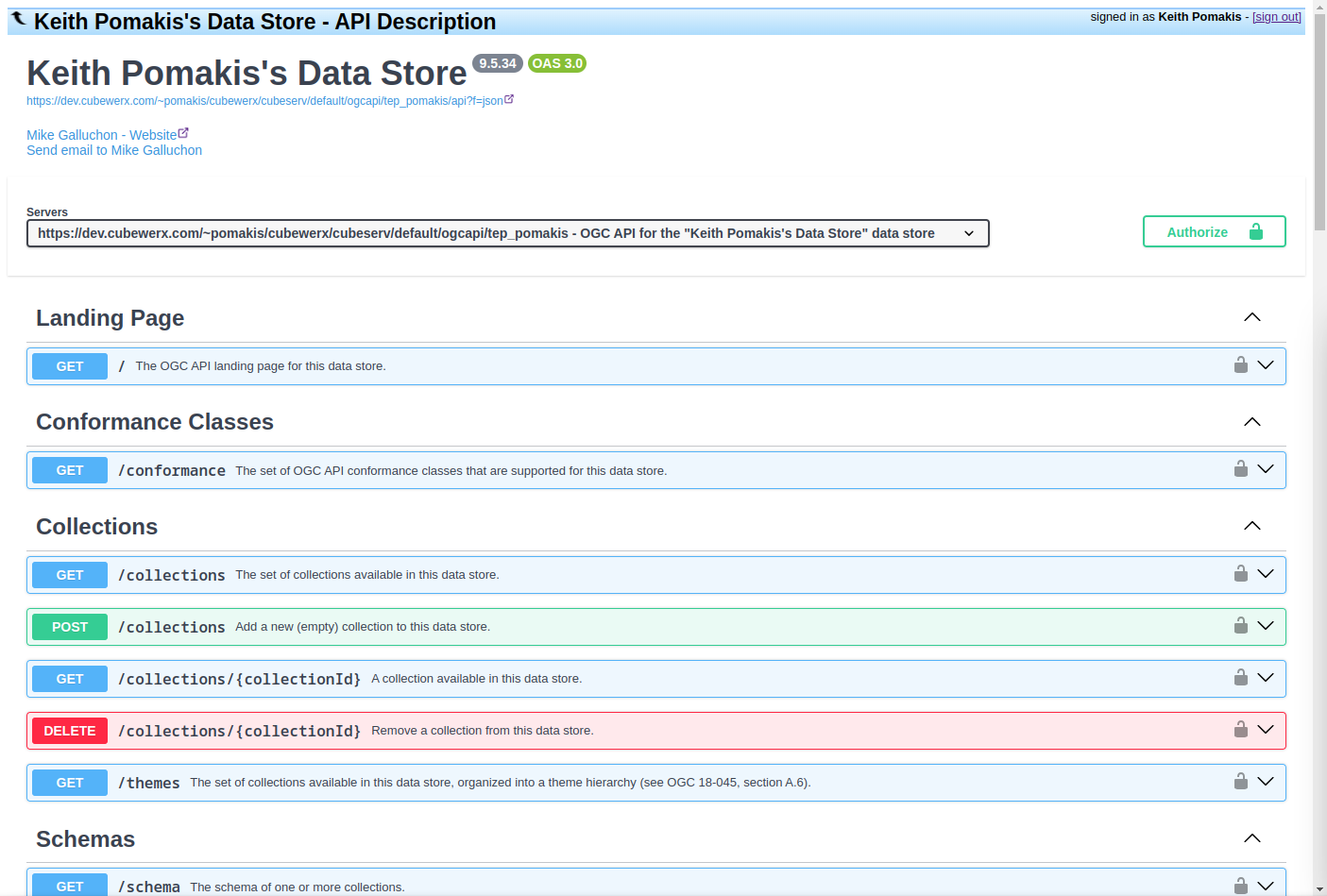
Conclusion
CubeWerx Insights marks a departure from traditional EO data platforms by integrating interoperability as a core feature, not an afterthought. It enables easy integration for third parties, whether they’re looking to search the catalog, develop new processes, or connect to web services. This approach addresses the challenges of the rapidly expanding EO industry without resorting to the creation of closed-off data silos.
With the OGC APIs, CubeWerx Insights offers a straightforward way for users to engage with a truly open platform. This design encourages not just the use of the platform, but active contribution to its ecosystem. CubeWerx Insights is built for those who see the value in open access to EO data and are looking for a platform that supports this vision.
CubeWerx Insights is in the late stages of product development, with a targeted release date in Q4, 2024. Please contact us at info@cubewerx.com if you have any questions, or would like to hear more about the platform.


